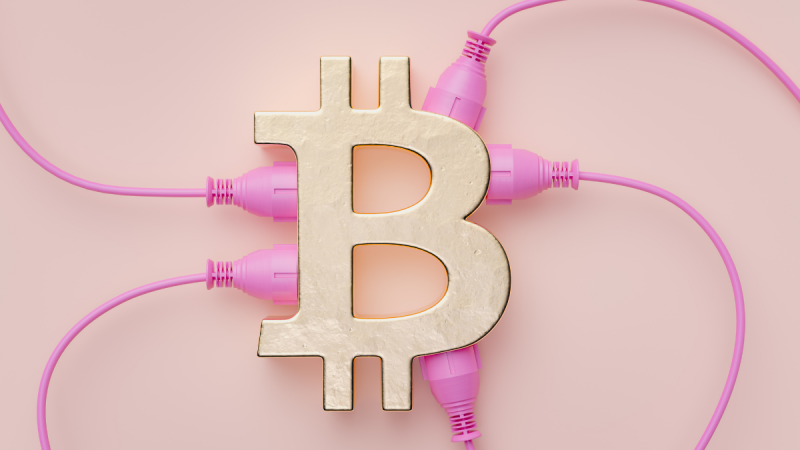In search of new revenue streams, bitcoin miners are diversifying their activities by hosting AI computers and providing high-performance computing (HPC) services. Given the growing energy demands of generative AI, these facilities offer a suitable infrastructure.
Block 1: Key news
ETF Ethereum Spot: The results of two days’ trading
In just two days since their approval, the Ethereum Spot ETFs have generated over $2 billion in trading volume. The first day saw a net inflow of $106.7 million, with over $1 billion in volume traded. The second day, though of similar volume, saw $133 million in net outflows, mainly due to $327 million in outflows from Grayscale’s ETHE fund, which charges a hefty 2.5% fee. In comparison, Franklin Templeton’s fund has much lower fees at 0.19%. The ETH share price fell by 5.2% in 24 hours.
Ferrari: The prancing horse goes bitcoin
Ferrari announced on Wednesday that from the end of July the company will extend the possibility of paying for its cars in cryptocurrencies in Europe, following a successful launch in the US last year. By the end of 2024, the brand also plans to extend this system to other countries where cryptocurrencies are accepted. To achieve this, Ferrari says it is working with specialist companies to ensure the security of transactions and immediately convert payments into traditional currency. The majority of Ferrari’s European dealers have already adopted or are in the process of adopting this new payment method.
Grayscale capitalizes on AI
Grayscale is launching a new investment fund, the “Grayscale Decentralized AI Fund LLC”, focused on decentralized artificial intelligence (AI) in the cryptocurrency sector. The fund will finance three key areas: AI services, solving problems associated with the centralized use of AI, and the development of AI-related infrastructure. Projects included at launch are Bittensor (TAO), Filecoin (FIL), Livepeer (LPT), Near (NEAR), and Render (RNDR).
Grayscale Decentralized AI Fund
The Block
Stripe: Buying cryptos by credit card
Online payments giant Stripe now enables European users to buy bitcoin (BTC), ether (ETH) and Solana (SOL ) directly by credit card. This initiative aims to facilitate the adoption of cryptocurrencies in Europe, by making them more accessible through a purchase widget integrated into merchants’ websites.
Block 2: Crypto Analysis of the week
In need of revenue and profits, bitcoin miners are turning to activities outside mining, such as AI computer hosting and high-performance computing (HPC) – which involves solving complex, resource-intensive calculations that cannot be efficiently handled by conventional computers – to diversify their income.
One of the fastest-growing areas of energy demand is in machine learning, known as generative AI, which requires a lot of energy for training and to produce answers to queries.
According to a study published by the International Energy Agency (IEA), training a large linguistic model such as OpenAI’s GPT-3, for example, consumes almosts 1,300 megawatt-hours (MWh) of electricity, equivalent to the annual consumption of around 130 American households. According to the IEA, a single Google search consumes 0.3 watt-hours of electricity, while a ChatGPT query consumes 2.9 watt-hours. (The average incandescent light bulb consumes 60 watt-hours of electricity.) If ChatGPT were integrated with the 9 billion searches carried out every day, according to the IEA, electricity demand would increase by 10 terawatt-hours per year, the amount consumed by around 1.5 million residents of the European Union.
And this energy consumption creates a problem for the AI industry: investors are pumping money into the sector, but companies don’t immediately have access to the infrastructure needed to meet ever-growing computing needs. This is where bitcoin miners and their data centers become a lucrative option for companies and investors.
AI and HPC may seem unrelated to bitcoin mining, but such diversification has become a way for bitcoin miners to make money, as evidenced by Core Scientific’s (CORZ) 200 megawatt (MW) AI deal with CoreWeave last month, which boosted CORZ ‘s share price by 40%. Since the announcement, JPMorgan noted that the total market capitalization of the 14 miners it tracks has risen by 22% to $4 billion. This reflects the alternative (and potentially more profitable) use cases for the mining facilities.
Since bitcoin miners’ profitability and earnings depend on the computing power of their machines, they are well placed to reto redesign their facilities to take advantage of the AI wave (you can also talk about HPC, if you want to differentiate yourself a little from the hype surrounding AI). Many of them, especially the larger structures, have very stable and powerful power supplies, efficient cooling systems and high-speed, low-latency network connectivity. This makes them a strategic option for companies looking for energy resources and data storage.
Private equity firms, meanwhile, are finally seeing value in bitcoin miners, as they can help AI-related companies to host their machines in a mining infrastructure.ber their machines into an already-built mining infrastructure, or partner with miners to build data centers faster than starting from scratch.
Block 3: Gainers & Losers
Cryptocurrency chart (Click to enlarge)

MarketScreener
Block 4: This week’s readings:
Tony Blair, prophet of the inevitable, embraces AI (Wired)
Taming the machine: should the technological revolution be regulated – and is it possible? (The Conversation)
The future of bitcoin in the U.S. will be decided at the ballot box (Bitcoin Magazine)
This news is republished from another source. You can check the original article here







